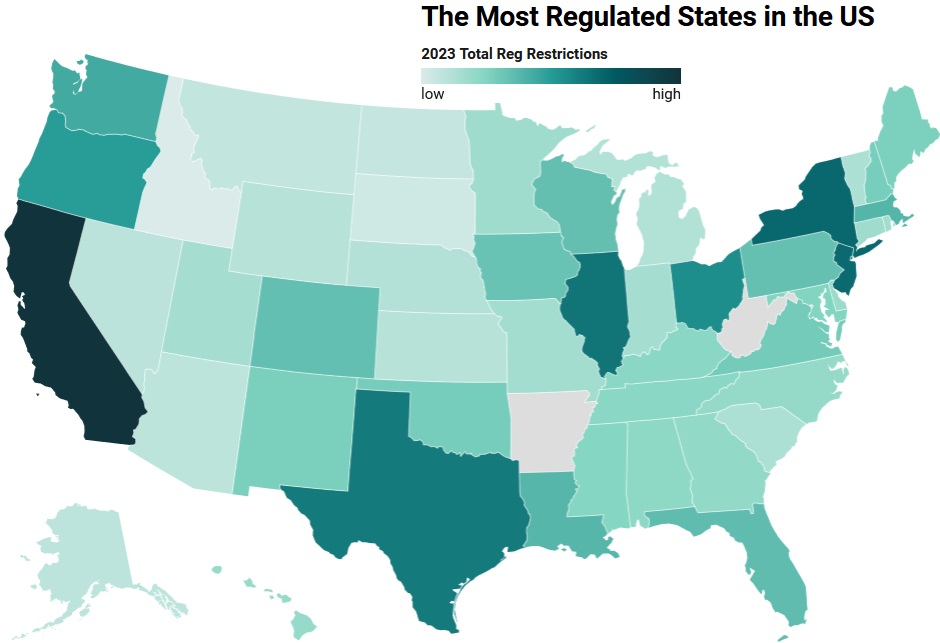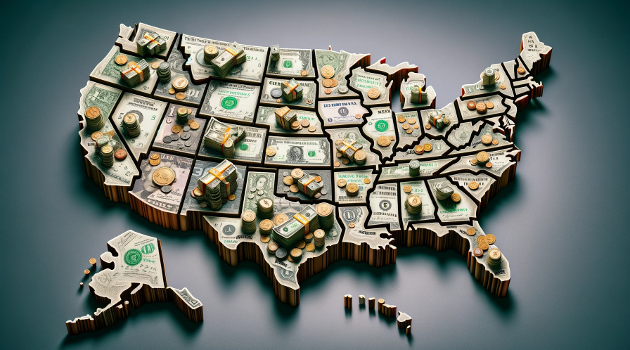When I write about regulation, it’s usually to highlight how red tape is causing bad outcomes in specific sectors (banking, child care, dentistry, credit cards, the Internet, etc).
But I’m a big fan of jurisdictional competition as a way of limiting bad policy, so I also like when states or countries are ranked on the quality of their policies.
With this in mind, I was very interested to see that Patrick McLaughlin and Dustin Chambers have a new report from the Mercatus Center that assesses states based on the the number of regulatory restrictions.
Here’s a map showing the states with the most red tape (dark green) and least red tape (light green).

Here’s how the authors categorize their research.
Mercatus research indicates that regulatory accumulation worsens economic conditions, inadvertently increasing poverty rates, destroying jobs, and raising prices. The path to reversing these trends is clear: Improve regulations by reducing their number. Our State RegData project has produced “snapshots” of state regulations that can help policymakers engage in that process. …Our analysis makes it abundantly clear that the states that have proactively tried to cut red tape have begun to see positive results. Interestingly, those same states that have been able to cut red tape have also enjoyed higher average annual economic growth rates.
Many of the results are not a surprise. For instance, California is the nation’s worst state for red tape, followed by New York and New Jersey. And I’m not surprised to see that Idaho and the Dakotas are the most laissez-faire states.
But who would have guessed that Texas is the 5th-worst state in the nation?

By the way, traditionally red Ohio is the 6th-worst state and deep-blue Vermont is the 11th-best state, so there are a few other surprises.
P.S. If you want to see how states rank for overall economic policy, I recommend Economic Freedom of North America and Freedom in the 50 States.


